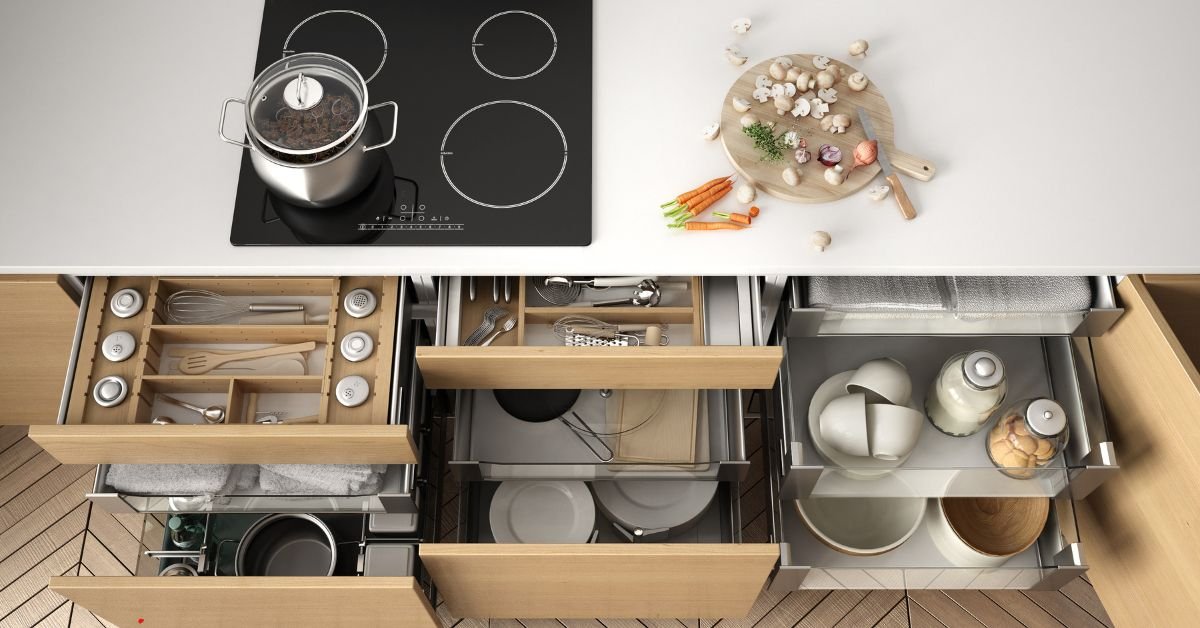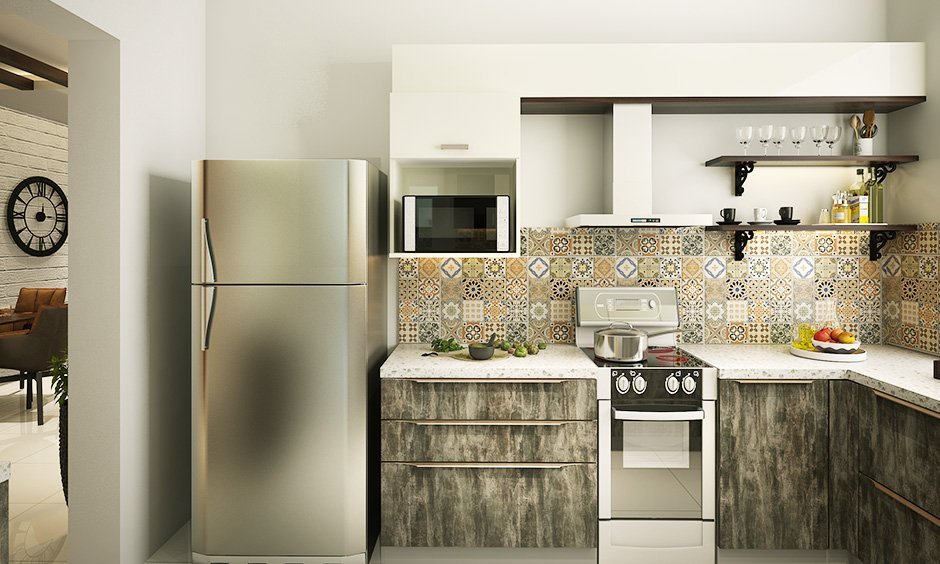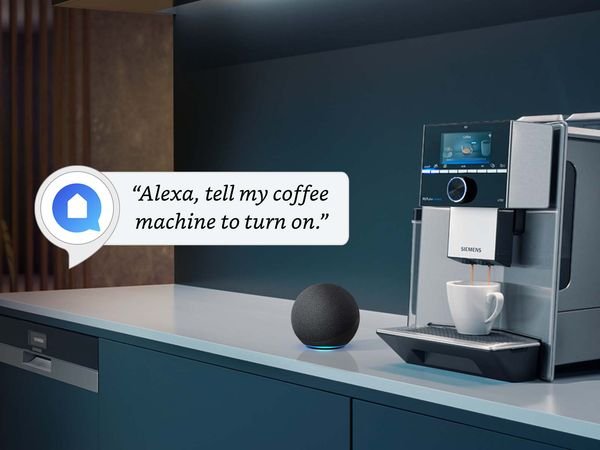Smart Kitchen Appliances for Gluten-Free Cooking
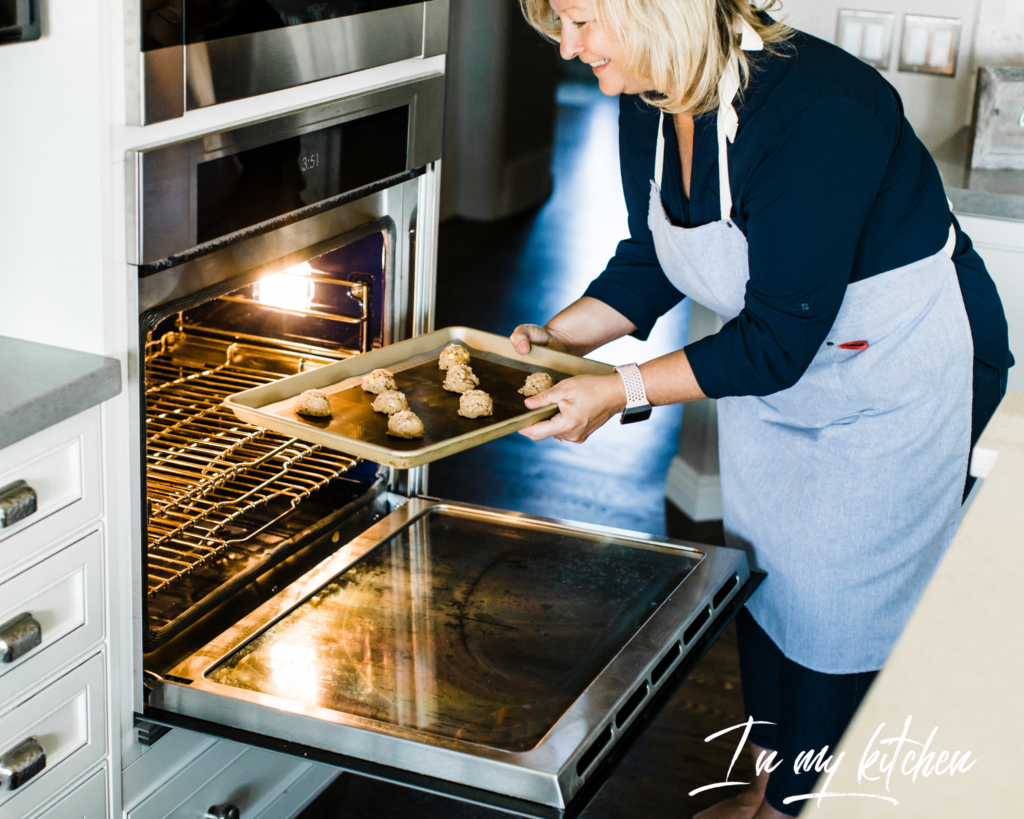
As more people embrace gluten-free diets, either due to celiac disease, gluten sensitivity, or personal choice, the demand for convenient and Smart Kitchen Appliances for Gluten-Free Cooking has risen dramatically.
For those committed to a gluten-free lifestyle, the kitchen can be a challenging space. Cross-contamination, precise ingredient measurements, and the need for specific cooking temperatures are just a few of the hurdles faced in preparing gluten-free meals.
However, with the advent of smart kitchen appliances, these challenges can be significantly minimized. Smart technology not only simplifies the cooking process but also ensures that gluten-free meals are prepared safely and efficiently.
The Importance of Gluten-Free Cooking
Let’s Explore some tips on the Importance of Gluten-Free Cooking.
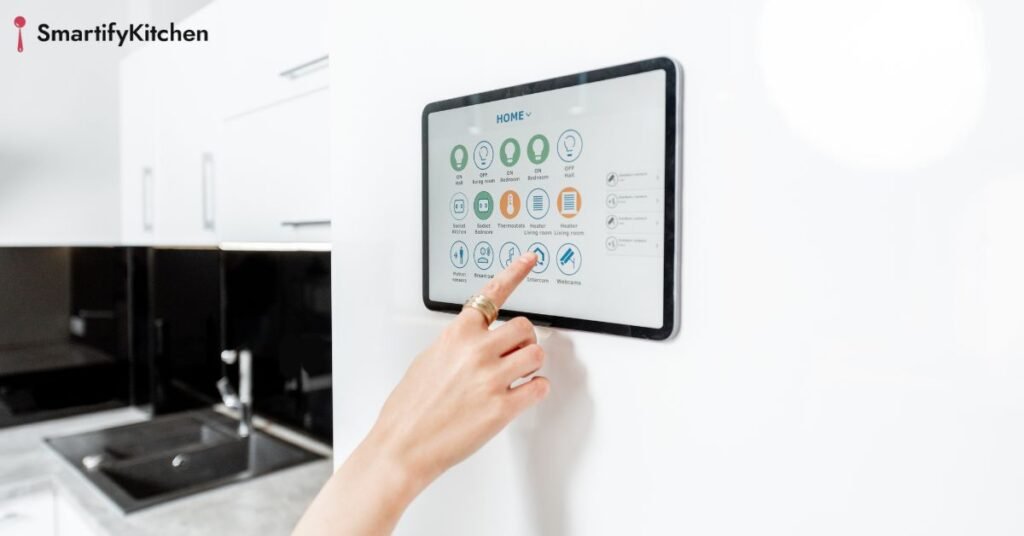
Overview of the Gluten-Free Diet
A gluten-free diet excludes the protein gluten, which is found in grains like wheat, barley, and rye. For individuals with celiac disease, consuming gluten triggers an immune response that damages the lining of the small intestine, leading to various health issues.
Even for those without celiac disease, gluten sensitivity can cause discomfort, making a gluten-free diet necessary. The rise in awareness of gluten-related disorders has led to a growing number of people adopting gluten-free diets, whether for medical reasons or personal wellness.
Challenges of Maintaining a Gluten-Free Kitchen
Maintaining a gluten-free kitchen requires vigilance. Cross-contamination, where gluten-containing ingredients come into contact with gluten-free foods, is a significant concern.
Moreover, gluten-free baking and cooking often require precise measurements and specific temperatures to achieve the desired texture and taste, as gluten-free ingredients behave differently from their gluten-containing counterparts.
This is where smart kitchen appliances can play a crucial role, helping to overcome these challenges with advanced features and automation.
Smart Kitchen Appliances for Gluten-Free Cooking
Let’s Review some Appliances for Gluten-Free Cooking.
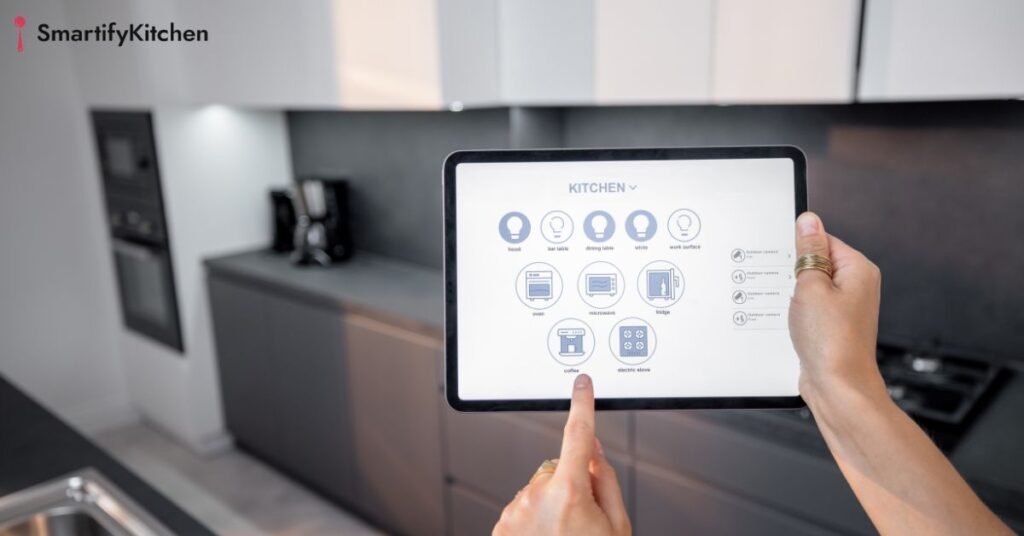
1. Smart Ovens
One of the most versatile appliances in a gluten-free kitchen is the smart oven. These ovens come equipped with features that make gluten-free cooking easier and more reliable.
- Programmable Recipes and Presets: Many smart ovens offer programmable recipes and settings specifically designed for gluten-free baking. This includes custom temperature and timing controls that are essential for achieving the right texture in gluten-free bread, cakes, and other baked goods. For instance, the ability to maintain consistent heat without fluctuation is crucial in gluten-free baking, as gluten-free flours often require precise baking conditions.
- Remote Control and Monitoring: With smart ovens, you can start preheating or adjust the temperature from your smartphone, ensuring that your gluten-free meal is cooked perfectly, even if you’re not in the kitchen. This feature is particularly useful for busy individuals who need to manage their cooking while multitasking.
- Examples of Smart Ovens: The Breville Smart Oven Pro and the June Oven are popular choices among gluten-free bakers. These ovens come with preset functions for different types of gluten-free recipes, ensuring consistent results every time.
2. Smart Bread Makers
For those who enjoy fresh, homemade bread but need to avoid gluten, a smart bread maker is an invaluable tool.
- Customizable Gluten-Free Settings: Smart bread makers often include specific settings for gluten-free bread, which adjusts the kneading, rising, and baking times to accommodate gluten-free flour. This is essential because gluten-free dough behaves differently from traditional dough; it doesn’t rise as much and can be denser.
- Consistency and Quality: With a smart bread maker, you can achieve a consistent quality in your gluten-free bread, ensuring that it’s not too dry or crumbly. These machines also allow you to experiment with different gluten-free flours, such as almond, coconut, or rice flour, giving you the flexibility to find the perfect blend for your taste.
- Popular Smart Bread Makers: The Zojirushi Home Bakery Virtuoso Plus and the Cuisinart Compact Automatic Bread Maker are well-regarded for their gluten-free baking capabilities. These models allow users to create custom programs tailored to the specific needs of gluten-free dough.
3. Smart Recipe Apps and Appliances
Incorporating smart recipe apps into your kitchen routine can make gluten-free meal planning and preparation much more manageable.
- Integration with Appliances: Some smart appliances, like ovens and slow cookers, can sync with recipe apps to automate cooking processes. For example, the Drop Kitchen app connects with various smart appliances to guide you through gluten-free recipes step-by-step, adjusting settings on your oven or stovetop as needed.
- Personalized Recipe Suggestions: These apps can recommend gluten-free recipes based on your dietary preferences, the ingredients you have on hand, or even your cooking habits. This personalization helps you discover new recipes while ensuring that you stay within the confines of a gluten-free diet.
- Examples of Smart Recipe Apps: Yummly and SideChef are popular recipe apps that integrate with smart kitchen appliances. They offer extensive gluten-free recipe collections and can connect with compatible devices to streamline the cooking process.
Smart Appliances for Gluten-Free Ingredient Management
Let’s Review some Smart Appliances for Gluten-Free Ingredient Management.
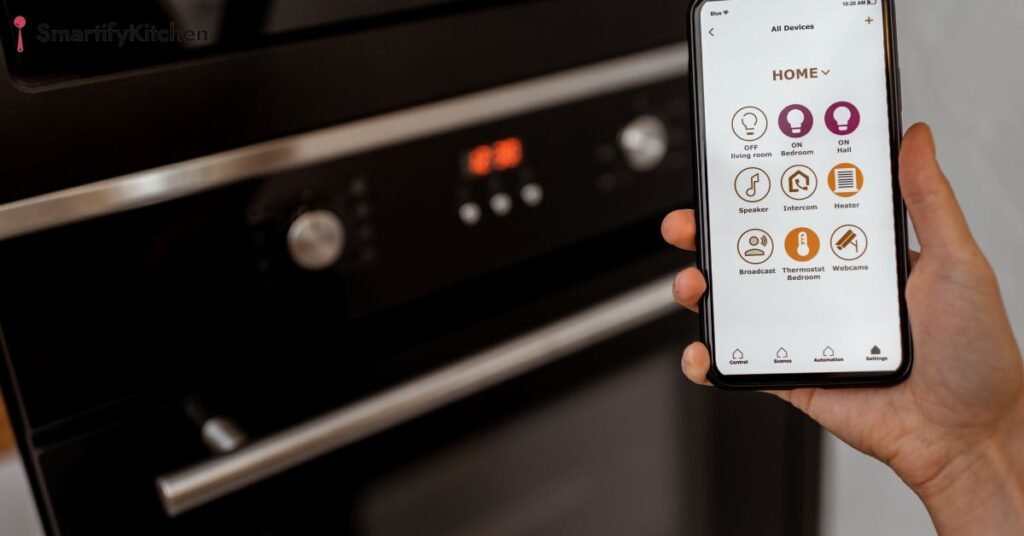
1. Smart Fridges
Keeping gluten-free ingredients separate from gluten-containing foods is crucial to avoid cross-contamination, and smart fridges can help with this task.
- Smart Storage Solutions: Smart fridges often come with customizable storage options, such as adjustable shelves and dedicated compartments, allowing you to designate specific areas for gluten-free ingredients. Some models even have temperature-controlled drawers that can be set to optimal conditions for storing gluten-free flours and mixes.
- Ingredient Tracking and Inventory Management: Advanced smart fridges can track the ingredients stored inside, alerting you when you’re running low on gluten-free essentials or when items are nearing their expiration date. This feature is particularly useful for managing gluten-free flours and other perishable items that may have shorter shelf lives.
- Examples of Smart Fridges: The Samsung Family Hub Refrigerator and LG InstaView Door-in-Door Refrigerator offer features like inventory tracking and customizable storage that can be beneficial for a gluten-free kitchen.
2. Smart Pantry Solutions
Organizing a gluten-free pantry is essential for quick and easy meal preparation, and smart pantry solutions can help streamline this process.
- Smart Dispensers and Scales: Smart dispensers allow you to store and measure gluten-free ingredients accurately, reducing the risk of cross-contamination. These devices can dispense precise amounts of flour, sugar, or other dry goods, ensuring consistency in your recipes. Smart scales, on the other hand, can sync with recipe apps to guide you through measurements, which is particularly useful for gluten-free baking where precision is key.
- Labeling and Organization: Smart pantry systems can also include features like digital labels that help you identify gluten-free ingredients at a glance. This is especially helpful in a mixed household where both gluten-free and gluten-containing foods are stored.
- Popular Smart Pantry Solutions: Products like the NutriBullet Balance smart food scale and the OXO Good Grips POP Containers with integrated labels can help you manage your gluten-free pantry efficiently.
Smart Cooking Assistants and Gadgets
Let’s Explore some Smart Cooking Assistants and Gadgets.
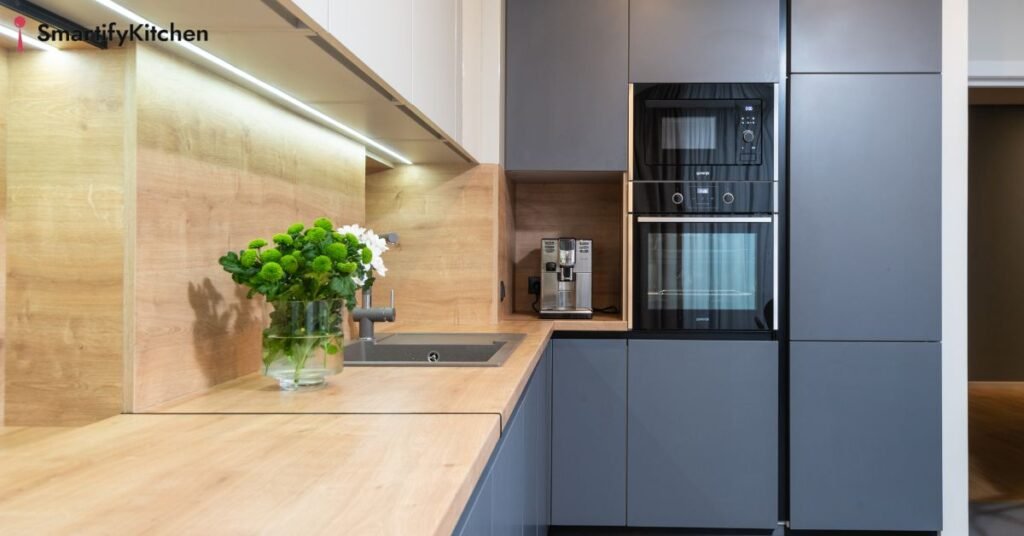
Smart Scales and Measuring Tools
Accuracy is critical in gluten-free cooking, where even slight deviations in ingredient quantities can affect the outcome. Smart scales and measuring tools can ensure that you get it right every time.
- Precision in Measurement: Smart scales can measure ingredients to the exact gram or ounce, providing the accuracy needed for gluten-free baking. Some models connect to recipe apps and adjust ingredient quantities based on the number of servings or dietary modifications, making it easier to follow gluten-free recipes.
- Syncing with Recipe Apps: These scales can sync with gluten-free recipe apps, automatically weighing and calculating the exact amounts needed as you cook. This feature not only saves time but also reduces the chances of errors.
- Examples of Smart Scales: The Escali Smart Connect and Drop Scale are excellent tools for gluten-free cooks, offering precision and app connectivity to streamline your cooking process.
Smart Thermometers
Smart thermometers are another valuable tool in a gluten-free kitchen, ensuring that your food is cooked to the right temperature for both safety and taste.
- Temperature Monitoring: Gluten-free baking and cooking often require specific temperatures to achieve the desired texture. For example, gluten-free bread needs to reach an internal temperature that ensures it is fully cooked without becoming too dry. Smart thermometers can monitor the temperature of your food in real-time, sending alerts to your phone when it’s ready.
- Assistance with Complex Recipes: Some smart thermometers come with preset temperatures for various types of gluten-free foods, taking the guesswork out of cooking. This is especially helpful for novice cooks or those trying out new gluten-free recipes.
- Popular Smart Thermometers: The MEATER Plus and ThermoWorks Smoke are popular choices, offering wireless monitoring and precision cooking to help you perfect your gluten-free dishes.
Enhancing Gluten-Free Cooking with Voice Assistants
Lets Enhance Some Gluten Gluten-Free Cooking with Voice Assistants.
Voice-Activated Recipe Assistance
Voice assistants like Amazon Alexa, Google Assistant, and Siri can be invaluable in a gluten-free kitchen, offering hands-free help as you cook.
- Guided Cooking: Voice assistants can guide you through gluten-free recipes step-by-step, allowing you to keep your hands free for cooking. This is particularly useful when handling gluten-free dough or batter, which can be sticky and difficult to manage.
- Setting Timers and Reminders: You can use voice commands to set timers, remind you of cooking steps, or even convert measurements. For example, if you need to know how many grams are in a cup of almond flour, your voice assistant can provide the answer immediately.
- Integrating with Smart Appliances: Many voice assistants can control smart kitchen appliances, allowing you to preheat the oven, adjust cooking temperatures, or start the coffee maker without touching a button. This integration helps maintain a clean cooking environment, reducing the risk of cross-contamination.
Hands-Free Cooking Tips
Using voice assistants can also help you maintain a gluten-free kitchen by reducing the chances of cross-contamination.
- Minimizing Touch Points: By using voice commands to control your appliances, you minimize the number of surfaces you need to touch during cooking, which can help keep gluten-free areas clean and safe.
- Recipe Adjustments on the Fly: If you need to make adjustments to a recipe while cooking, such as doubling the amount or substituting an ingredient, a voice assistant can make these calculations for you, ensuring that your gluten-free meal turns out as intended.
Energy Efficiency and Smart Gluten-Free Cooking
Let’s Review some Energy Efficiency and Smart Gluten-Free Cooking.
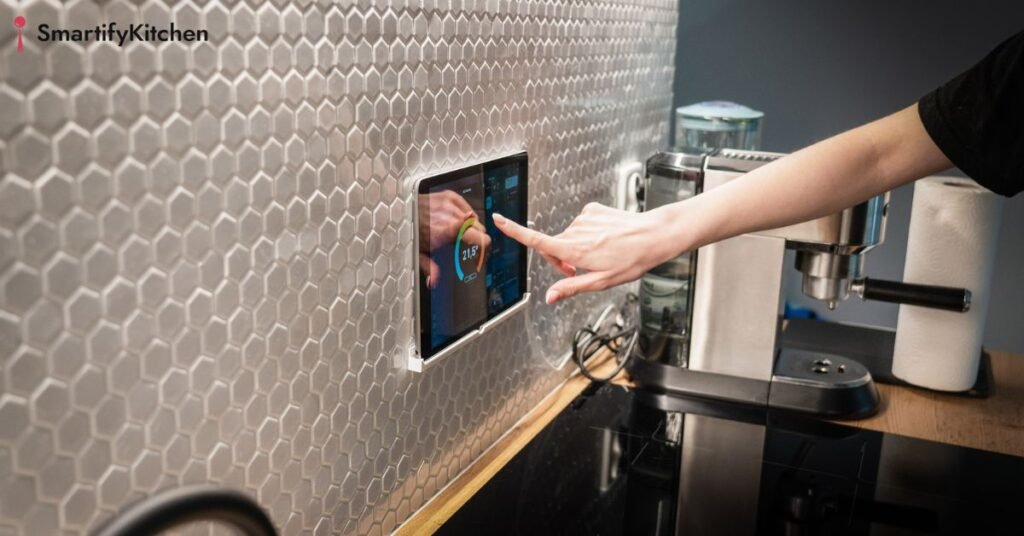
Energy-Saving Features in Smart Appliances
Smart kitchen appliances are not only convenient but also energy-efficient, helping you save on utility bills while cooking gluten-free meals.
- Eco-Friendly Settings: Many smart ovens and cooktops come with energy-saving modes that reduce power consumption without compromising cooking quality. These settings are particularly useful when preparing meals that require long cooking times, such as gluten-free bread or casseroles.
- Scheduling and Remote Control: Smart appliances often allow you to schedule cooking times or control them remotely, ensuring that they’re only on when needed. This feature not only saves energy but also allows you to plan your cooking around your schedule, ensuring that gluten-free meals are ready when you are.
Eco-Friendly Gluten-Free Cooking
Reducing food waste is an essential part of eco-friendly cooking, and smart appliances can help you achieve this in your gluten-free kitchen.
- Portion Control: Smart scales and recipe apps can help you prepare the right amount of food, reducing leftovers and minimizing waste. This is especially important in gluten-free cooking, where ingredients can be more expensive and harder to store.
- Using Leftovers: Smart fridges can suggest recipes based on the gluten-free ingredients you have on hand, helping you make the most of leftovers and reducing the need to throw out unused food.
Troubleshooting and Tips for Gluten-Free Cooking with Smart Appliances
Let’s Explore some Troubleshooting and Tips for Gluten-Free Cooking with Smart Appliances.
Common Issues in Gluten-Free Cooking
Even with the help of smart appliances, gluten-free cooking can present challenges. However, understanding these common issues can help you troubleshoot effectively.
- Dry or Crumbly Baked Goods: Gluten-free baked goods can sometimes turn out dry or crumbly. To address this, ensure that you’re using the correct moisture content, which can be monitored with smart thermometers and scales. Additionally, using programmable settings on your smart oven can help maintain the right baking conditions.
- Inconsistent Results: If your gluten-free recipes aren’t turning out consistently, consider using a smart bread maker or oven with custom settings. These appliances can ensure that each batch is prepared under the same conditions, leading to more reliable results.
Tips for Optimizing Smart Appliances for Gluten-Free Meals
Maximizing the potential of your smart appliances can help you get the most out of your gluten-free kitchen.
- Regular Calibration: Ensure that your smart appliances are regularly calibrated for accuracy, particularly scales and thermometers. This ensures that your gluten-free recipes are prepared with the correct measurements and temperatures.
- Experimentation and Customization: Don’t be afraid to experiment with the custom settings on your smart appliances. Gluten-free cooking often requires adjustments, and the ability to fine-tune your cooking processes can lead to better results.
Read More : How to Troubleshoot Smart Kitchen Appliances
Conclusion
Smart kitchen appliances offer a host of benefits for those committed to gluten-free cooking. From smart ovens that provide consistent baking conditions to smart fridges that help organize and track gluten-free ingredients, these tools can transform the way you manage your gluten-free kitchen.
By incorporating smart technology into your cooking routine, you can overcome many of the challenges associated with gluten-free diets, ensuring that your meals are not only safe and delicious but also prepared with ease.
Whether you’re new to gluten-free cooking or a seasoned expert, smart appliances can help you achieve better results, reduce stress, and enjoy the process of creating gluten-free dishes.

